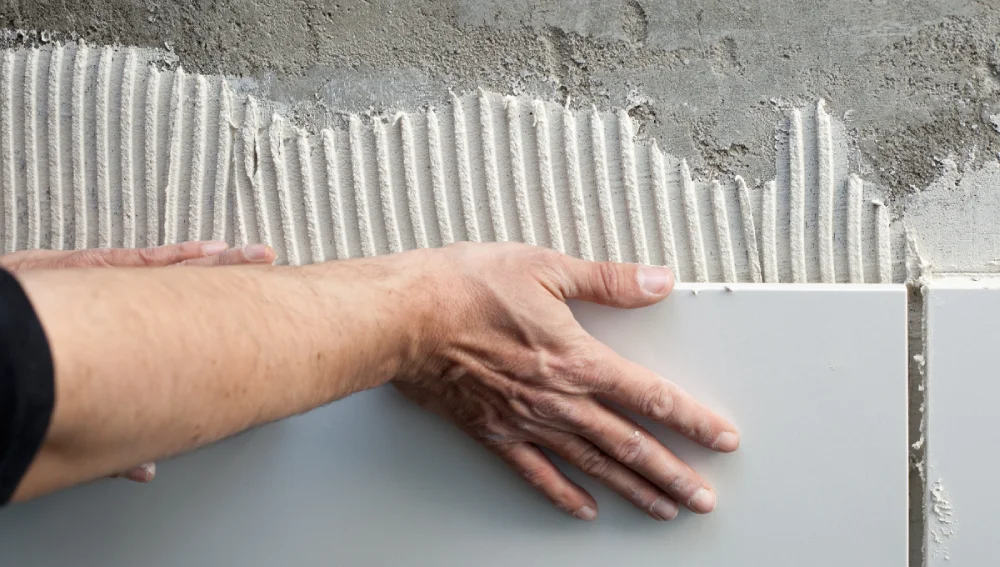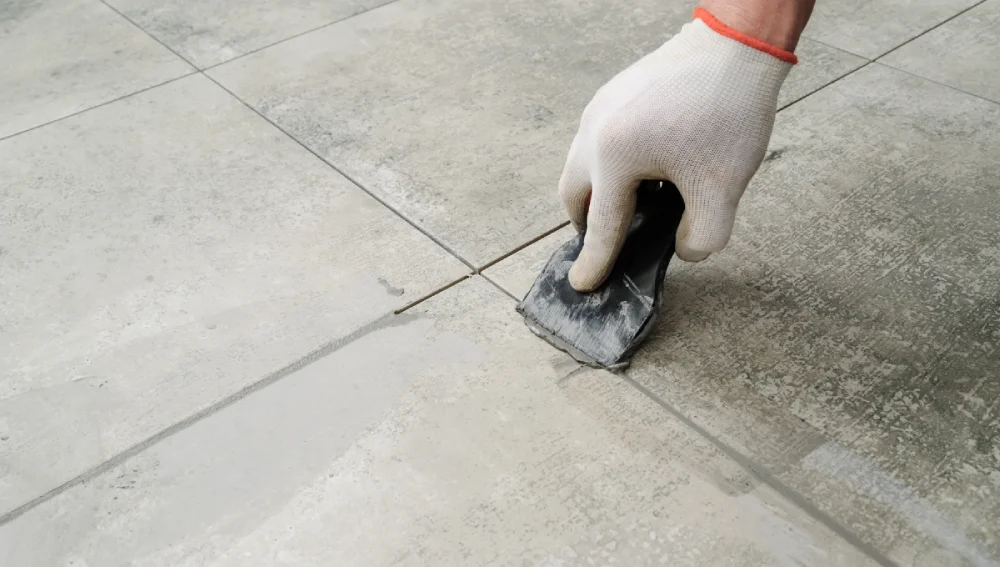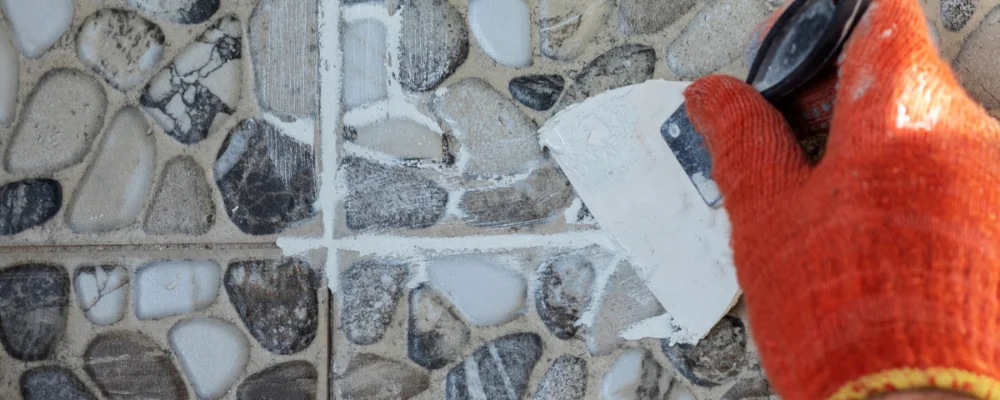Accidental spills of white cement on tiles can be a major hassle, right? Whether it’s just a mess during a DIY project or a bigger spill from some renovation, don’t worry! You can clean your tiles and make them shine again. With the right tools and approach, this article will guide you step by step through the process.Why White Cement Sticks to Tiles?
White cement is tough and attractive, making it popular in construction. It forms a strong bond, making it tricky to remove it from surfaces like tiles once it dries up. The cement sticks stubbornly, so you’ll need an effective way to clean it off. When white cement meets water, it goes through a chemical reaction, hardening over time. This hardening forms a strong bond with the tiles’ surfaces. Understanding why it sticks helps you figure out the best ways and tools to get rid of it.
What You’ll Need
Before getting started, gather these items:
- Protective Gear: Safety first! Put on gloves for your hands, goggles for your eyes, and a mask to dodge dust or fumes.
- Scraper: Use a plastic or metal scraper to gently lift the cement. Plastic scrapers are usually better, as they have less chance of scratching tiles.
- Brush: A stiff-bristle brush is great for scrubbing away any leftover bits after lifting the bulk of the cement.
- Cleaner: You can use a commercial cement remover or mix vinegar and water together. Vinegar’s natural and good for light stains!
- Water: For rinsing off the tiles and getting rid of cleaning solution.
- Sponge or Cloth: Use this to wipe down tiles and make sure all residue is removed
Step-by-Step Guide to Removing White Cement

Here’s how to get that annoying white cement off your tiles:
1. Prioritize Safety
Safety’s very important when dealing with tools and chemicals. Start by putting on gloves, goggles, and a mask to keep dust and bad stuff away from you.
2. Evaluate the Cement Stain
Check out how big the cement stain is. Is it just a little bit or much larger? Tiny spots might be easy-peasy with basic tools; bigger ones might need extra effort—or even professional help. Prepare the Area
Don’t forget about the surrounding surfaces! Cover them with plastic sheets or newspapers to prevent damage. Especially when working near valuable stuff!
3. Soften the Cement
To make your removal easier, soften that cement first! Apply a commercial remover as per instructions, or mix equal parts vinegar and water and spread that on too. Let it chill for about 30 minutes to an hour—it’ll break down that bond so much better.
4. Scrape Gently
After softening, take your scraper and gently lift that cement off the tile surface! Go slow—avoid scratches! If some areas are being stubborn, apply more pressure or soften them again.
5. Brush and Scrub
Now use your stiff-bristle brush to scrub those tiles after most of the cement’s gone! Dip it in a vinegar solution or cleaner; it’ll help get rid of any remaining residue.
6. Rinse and Wipe
Rinse those tiles off with clean water next! This removes leftover cleaning stuff and any bits of cement. Use a sponge or cloth to dry off nicely—make sure no cleaning agents linger behind!
7. Repeat if Needed
If stubborn stains hang around, don’t fret—just do the process again! Reapply your softening solution if needed and give it another go!
Tips for Preventing Future Cement Stains

Want to avoid this mess later? Check out these tips:
- Cover Surfaces: Always protect those tiles with plastic sheets or newspapers when you’re working with concrete mixtures.
- Clean Spills Immediately: Move fast! The sooner you tackle spills, the easier they will be to remove before they harden.
- Use a Barrier: Consider putting on a thin layer of wax or oil on the tiles before starting projects—it helps keep spills easy to clean up!
Common Mistakes to Avoid
Watch out for these common slip-ups:
- Using Harsh Tools: Stay away from metal scrapers or steel wool—they can really scratch your tiles up! Stick with soft brushes and plastic scrapers for the best outcome.
- Skipping Safety Measures: Never ditch protective gear—gloves and goggles are key! They’ll keep you safe from dust and chemicals.
- Rushing the Process: Slow down! Take your time with steps; rushing could mean missing spots and damaging those tiles instead of cleaning them.
When to Call a Professional
In some cases,removing white cement might be too much work for you! If it’s really hard or covering a big area, calling in professionals could be smart—they’ve got special tools and know-how for tricky jobs without harming your tiles.
Conclusion
Removing white cement from tiles seems challenging, but you can succeed with the right approach and equipment. Follow these instructions, and your tiles will regain their clean, fresh appearance. Taking preventive measures helps you avoid this issue in the future. Remember, effective cleaning requires patience and correct techniques. Good luck with your cleaning task!
FAQs
A: It’s usually safe for ceramic and porcelain tiles, but it may damage natural stone ones. Always test a small spot first, to ensure safety
The time varies based on the amount of cement and what tools you have handy—tiny spots might be done in an hour; big areas could take several hours and more.
Yes! You can create a safe solution by combining vinegar and water. This mixture works on small stains without using harsh chemicals.
If the cement stays stubborn, reapply more remover and allow it to sit for a longer period. You might need to repeat this process several times for tough spots or seek professional assistance.
If you exercise caution and use appropriate tools, you can remove the cement without causing harm to your tiles.

